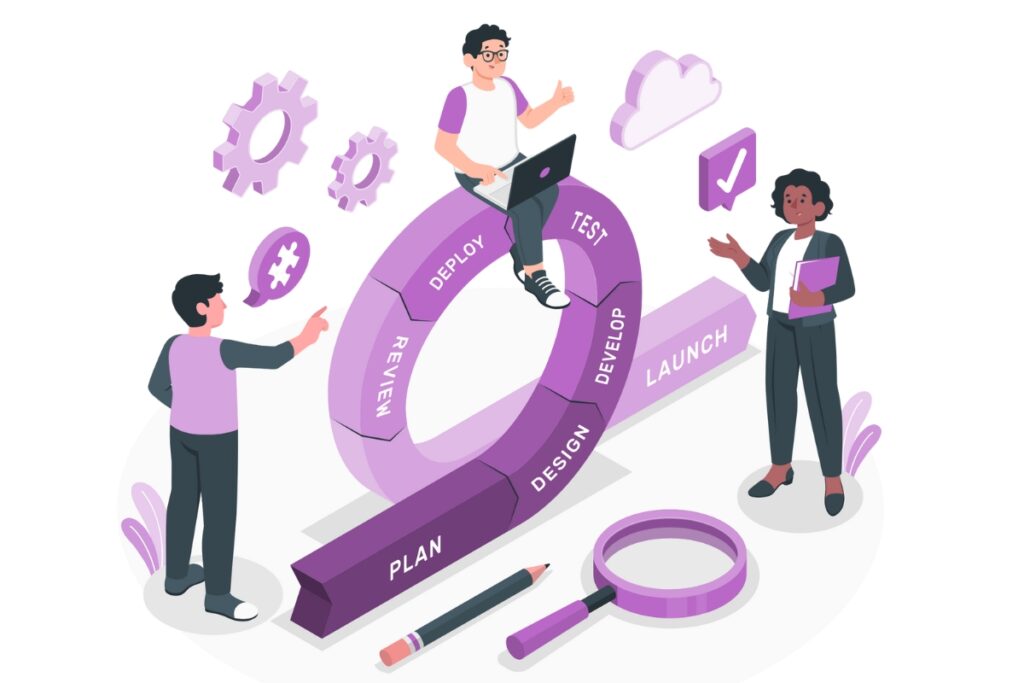Table of Contents
ToggleA. Reduce project cost
B. Accelerate product delivery
C. Centralize decision-making
D. Enable changing priorities
E. Reduce changes
The correct answer is
B. Accelerate product delivery
D. Enable changing priorities
Explanations
The top two reasons for adopting Agile in an organization are:
- Accelerate product delivery – Agile methodologies emphasize iterative development, continuous feedback, and the delivery of small, incremental releases. This approach allows organizations to bring products and features to market more quickly than traditional waterfall methods.
- Enable changing priorities – Agile provides the flexibility to adapt to changes in customer needs, market conditions, or business goals. Through regular iterations and feedback loops, Agile teams can pivot and adjust their focus to accommodate new priorities, ensuring that the product development process remains aligned with current objectives and opportunities.
Adopting Agile methodologies in an organization fundamentally transforms how projects are managed and executed, primarily focusing on delivering value to customers quickly and responding to changes effectively. Let’s explore the deep details of the two top reasons for adopting Agile: accelerating product delivery and enabling changing priorities.
Accelerate Product Delivery
Agile methodologies, such as Scrum, Kanban, and Lean Software Development, advocate for breaking down large projects into smaller, manageable increments or iterations. This approach has several key benefits:
- Faster Time to Market: By focusing on the development of small increments, teams can deliver features more quickly. This iterative process means that a product can go to market faster, providing a competitive advantage and early feedback from real users.
- Continuous Integration and Delivery: Agile encourages the practice of continuous integration (CI) and continuous delivery (CD), where code changes are automatically built, tested, and prepared for production release. This automation reduces manual overhead and accelerates the delivery process.
- Minimized Risk: Delivering work in small pieces reduces the risk associated with large-scale failures. Any issues can be detected and rectified early in the development cycle, preventing them from escalating into more significant problems.
Enable Changing Priorities
One of the Agile Manifesto’s core principles is responding to change over following a plan. This adaptability is a crucial advantage of Agile methodologies:
- Flexibility: Agile frameworks are designed to accommodate changes even late in the development process. This flexibility ensures that the product remains relevant and aligned with user needs, even as those needs evolve.
- Regular Feedback Loops: Agile processes include regular feedback loops with stakeholders and customers, such as sprint reviews in Scrum. This ongoing communication allows teams to adjust their priorities based on the latest feedback, ensuring that product development is always aligned with the market demand and strategic goals.
- Prioritization and Backlog Management: Agile teams maintain a product backlog, a prioritized list of work items or features. The backlog is regularly reviewed and reprioritized to ensure that the team is always working on the most valuable tasks. This dynamic prioritization process enables teams to shift focus quickly in response to changing requirements or opportunities.
Conclusion
Adopting Agile methodologies offers organizations the agility to respond to the fast-paced and ever-changing market environment. By accelerating product delivery, companies can achieve a faster time to market, benefit from early customer feedback, and continuously iterate to improve the product. Simultaneously, the ability to enable changing priorities ensures that the development effort remains aligned with current business goals and customer needs, maximizing the value delivered. Agile transformation requires a cultural shift within the organization, emphasizing collaboration, customer focus, and a commitment to flexibility and continuous improvement.
Other Leading SAFe 6.0 Question – SAFe’s first Lean-Agile Principle includes “Deliver early and often” and what else?
